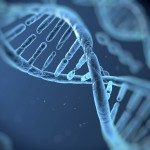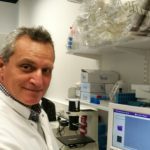Link to Pubmed [PMID] – 15855039
Hear. Res. 2005 May;203(1-2):144-53
A subtracted library prepared from vestibular sensory areas [Nat. Genet. 26 (2000) 51] was used to identify a 960bp murine transcript preferentially expressed in the inner ear and testis. The cDNA predicts a basic 124aa protein that does not share any significant sequence homology with known proteins. Immunofluorescence and immunoelectron microscopy revealed that the protein is located mainly in the kinocilium of sensory cells in the inner ear. The protein was thus named kinocilin. In the mouse, kinocilin is first detected in the kinocilia of vestibular and auditory hair cells at embryonic days 14.5, and 18.5, respectively. In the mature vestibular hair cells, kinocilin is still present in the kinocilium. As the auditory hair cells begin to lose the kinocilium during postnatal development, kinocilin becomes distributed in an annular pattern at the apex of these cells, where it co-localizes with the tubulin belt [Hear. Res. 42 (1989) 1]. In mature auditory hair cells, kinocilin is also present at the level of the cuticular plate, at the base of each stereocilium. In addition, as the kinocilium regresses from developing auditory hair cells, kinocilin begins to be expressed by the pillar cells and Deiters cells, that both contain prominent transcellular and apical bundles of microtubules. By contrast, kinocilin was not detected in the supporting cells in the vestibular end organs. The protein is also present in the manchette of the spermatids, a transient structure enriched in interconnected microtubules. We propose that kinocilin has a role in stabilizing dense microtubular networks or in vesicular trafficking.



